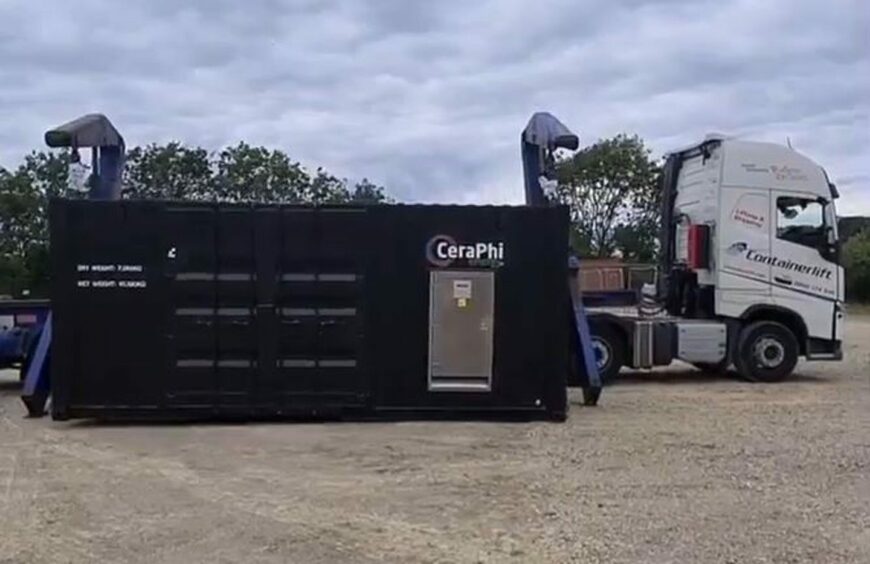
CeraPhi Energy says work has begun at its demonstrator project, which will see an onshore gas well repurposed for geothermal heating.
Writing on LinkedIn, the firm’s subsurface manager Andy Wood hailed “very exciting times” as last week marked the start of “boots on the ground” at the demonstrator project at Kirby Misperton in North Yorkshire.
Work at the KM-8 well – an appraisal well drilled by operator Third Energy around a decade ago as a target for fracked gas – will now see the site repurposed to provide geothermal heat for homes and businesses.
Mr Wood said a CeraPhiTRU™ (Thermal Response Unit) container has now been delivered in preparation for the overhaul to turn KM-8 into a geothermal producer.
“We’ll spend a few months producing energy from the rig while monitoring and recording temperatures in order to provide production profiles,” he said.
“The data collected will be invaluable. It will help us in the fine tuning of our modelling software.”
Indicating the scale of potential, Third Energy says initial feasibility studies have already been conducted for wells across the region including MN4, KM3, KM5, KM6, KM7, KM8, PK1, PK2, EM1 and EM2.
Mr Wood said the work marked an “incredibly important” proof of concept for the firm’s process.
“I talk to technical professionals regularly who understand how wells function. To them there is no doubt about the heat transfer ability of fluids from wells.
“However, there are those who need to see proof that the CeraPhiWell™ is a solution which can provide direct heat at surface. Ticking that box is an important step in the evolution of CeraPhi Energy.”
CeraPhi has also advertised for new roles due to the expansion of its business and plans to invite visitors to the site from late September to see the technology first hand.
Meanwhile the firm is working on an offshore pilot project at EnQuest’s Magnus platform, which will see it work with Petrofac to assess the feasibility of the technology for offshore oil and gas.
Here CeraPhi is using a closed loop system designed to fit into old wells to extract heat from deep underground via a downhole heat exchanger.
Depending on the results, it says the heat could be used as direct power and/ or heating or cooling utilities and other services, reducing the overall carbon emissions of the facility.
Recommended for you
